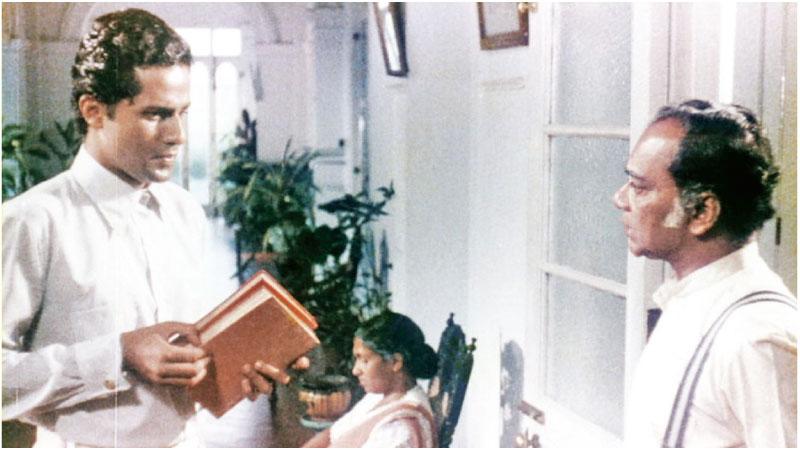
 The film adaptation of Dr. Martin Wickremasinghe’s novel Kaliyugaya (Era of Darkness) is directed by Dr. Lester James Peries. Kaliyugaya is the sequel to Gamperaliya (Transformation of the Village). The last novel in the trilogy is Yuganthaya (End of an Era). Kaliyugaya features the same cast as Gamperaliya in the main roles of Piyal, Nanda, Anula and Tissa with the addition of Sanath Gunathilaka as Alan. The film is set in the mid nineteen sixties more than twenty years after Nanda and Piyal’s marriage in Gamperaliya. It begins with a depiction of Nanda and her younger brother Tissa visiting their childhood home, the mahagedara in the Southern Sinhalese village of Koggala in the Galle District.
The film adaptation of Dr. Martin Wickremasinghe’s novel Kaliyugaya (Era of Darkness) is directed by Dr. Lester James Peries. Kaliyugaya is the sequel to Gamperaliya (Transformation of the Village). The last novel in the trilogy is Yuganthaya (End of an Era). Kaliyugaya features the same cast as Gamperaliya in the main roles of Piyal, Nanda, Anula and Tissa with the addition of Sanath Gunathilaka as Alan. The film is set in the mid nineteen sixties more than twenty years after Nanda and Piyal’s marriage in Gamperaliya. It begins with a depiction of Nanda and her younger brother Tissa visiting their childhood home, the mahagedara in the Southern Sinhalese village of Koggala in the Galle District.
As Nanda sits down in a chair in the verandah of the mahagedara, the film goes back in time and memory by re-playing an opening sequence from Gamperaliya where Nanda remembers her being taught English by Piyal in the verandah, which echoes Nanda’s past doubts about a commoner marrying a princess and Piyal’s confident and firm refutation of her doubts.
Kaliyugaya is an epistolary novel as well as a memory narrative. A large part of the novel is written in the form of a letter by Nanda and Piyal’s first born, estranged son Alan who is domiciled in England. It is a memory narrative because in his letter Alan recalls memories of his unhappy childhood. Alan is disillusioned at a young age with the shallow life of his parents and their constant partying and socialising.
It is in fact Nanda and not Piyal who enjoys this shallow socialising and seriously neglects her parental duties as a mother and leaves it to her elder sister Anula to raise her three children - Alan, Nalika and Chandrasoma. Alan forms a close attachment with Anula who eventually leaves Colombo for Koggala because she is suffering from tuberculosis after which Nanda appoints a nanny to look after her children. As an adult, Alan becomes estranged from his parents because they oppose his romantic involvement with a Burgher girl, Irene. Irene dies in England after which Alan writes to Nanda blaming her and Piyal for his situation and Irene’s death. Alan gave up his higher education in Engineering at university because Nanda and Piyal were against his relationship with Irene. Alan then marries Irene against his parents’ wishes and leaves Sri Lanka for England.
But Alan cannot find employment in England because he did not complete his university education, and as a result, he and Irene go through a very difficult time and Irene has to work very hard in a menial job in order to make ends meet which affects her health and causes her untimely death.
In his second letter, Alan informs Nanda of successfully completing his higher education and graduating with a Degree in Engineering in England and finding a good job in London and his second marriage to an English girl who cared for him while he was very ill with pneumonia.
Nalika’s involvement and promise to marry a young man named Simon Kabalana who is from a low social class angers Nanda although Piyal approves of the relationship. Chandrasoma proves to be a disappointment to Piyal and Nanda because he neglects his studies and of his extravagant spending and irresponsible life.
The novel moves back and forth in time and memory and has features of the stream of consciousness narrative technique which was explored by British author Virginia Woolf and Irish writer James Joyce in the early twentieth century.
The film captures the essence of the novel in its portrayal of social change and accurately presents the social milieu of the time.
